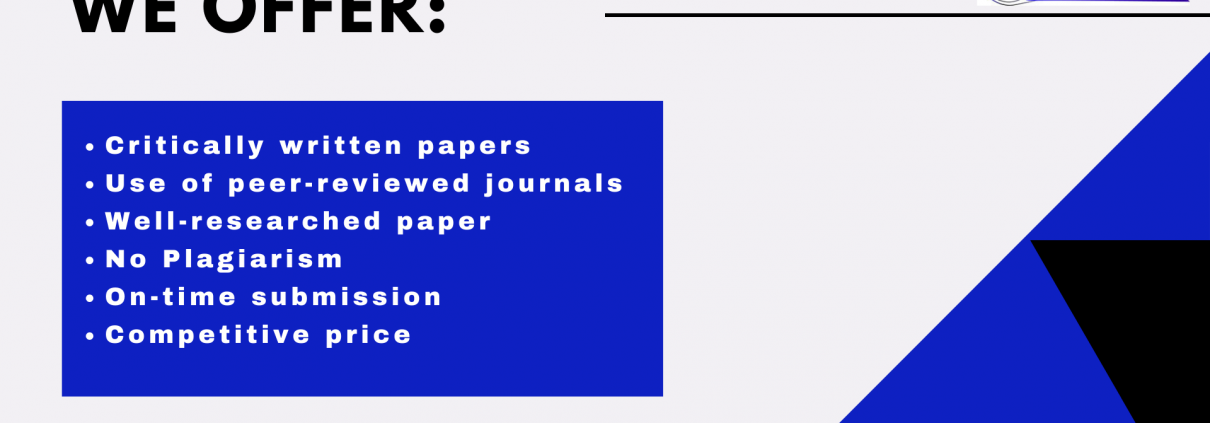Executive summary
This report highlights the project of Best & Less that involves digital transformation to improve the customer services of the company. Work breakdown structure has been developed to demonstrate different stages of project management.
Introduction
Best & Less is a Australia-based travel company that aims to introduce an internet booking system that would enhance the experience of the customers with the company. Eagles iTechnology is supposed to be the IT consultancy firm that would help the company to develop an effective internet based system using PRINCE2 management structure. The project is supposed to increase the engagement of the customers in the company up to 10-15 percent by the end of the financial year. This report highlights the different stages of development of the project, budget and stakeholder management as well as communication strategy during the project.
Phases of the Project Life Cycle (PLC)
Initiation
Best & Less generally operates their sales operations through direct channels, high street agents for travel and via telephone calls. As per the views of Pospieszny (2017), the globalisation and emergence of digital technology has evolved, the requirements and demands of modern customers have changed. Although the company maintains a website, it is not supposed to be effective enough to draw the attention of the potential customers. So, the company has initiated a digital transformation within the business structure of the company that would improve the quality of customer services of the company. A new internet booking system has been initiated to be developed to attract more potential customers to the company. The MIS (management information system) of the company has also been determined to be developed so that the system can be used to trawl the databases and targeted data can be sent to the customers according to their interests. As opined by Rushdi & Alturki (2017), the system would not only help in attracting new potential customers but also would improve the satisfaction of the existing customers. The administration department, sales and operation department as well as the IT department have been supposed to be involved in the project. Considering the size and capability of the IT department, a IT consultancy firm named Eagles iTechnology has been involved in this project to design and develop the advanced e-commerce applications for the company.
Planning
Integration of internal resources and the relevant stakeholders is considered to be the initial strategy of the planning process in the business project. The requirement and expectation of the project has been critically evaluated during the project. Based on the views of Radujković & Sjekavica (2017), details of the project and every specification of the production in the project is supposed to be analysed while developing the plans for the project. A SWOT analysis has been conducted to measure the strengths and weaknesses of the company that would determine the success or failure of the project. The brand recognition and reputation of Best & Less within the market as well as the current position of the potential competitors have been evaluated in the SWOT analysis. The changing aspects of the target market have also been evaluated at this course of time. Based on the views of Rew et al. (2020), lack of the ability of using the internet in an extensive way has become the weakness of the company. Porter’s five force model has also been applied to measure the business position of the company within the market. The business innovation strategy has been developed at this point in time and the budget for the development of the IT solutions has also been planned in this phase of project management. A telephone survey has also been conducted to understand the demand and expectations of the existing customers. It has helped in measuring the potential benefits that would be obtained from the project. Therefore, it has been estimated that if the project turns out to be successful, the company can obtain the benefit between 78,000 AUD to 120,000 AUD through internet bookings.
Execution
Potential software vendors have been approached to undertake the business operation in order to improve the customer satisfaction of the company. Although the assessment of additional business amounts is supposed to be difficult, it has been observed that the company would be able to increase the engagement of the customers within the company up to 10-15 percent through the introduction of the e-commerce system. According to the recommendation of the consultancy company, PRINCE2 type of the structure of management has been chosen to build the efficient team to manage the project. All of the three directors of the company are supposed to monitor the whole project. Two different teams have been involved to complete the whole process of digital transformation within the company. As per the views of Vides, Pertuz & Díaz (2021), in the process of project execution, the stakeholders are supposed to be identified and clarified with the roles and responsibilities according to the expectations and requirements in this project. The teams have been divided under Tim Cook and Simon Nick who are supposed to develop a MIS system and an internet software respectively. Both of the teams are supposed to be assessed by the principal consultant of Eagle iTechnology. The investments for the project have also been divided into three years to assess the gradual improvement in the operational management structure of the company. The potential software vendor has been involved in the determination of the overall investment for the project. Emeka Steven has been engaged in monitoring the whole process of the project management that would impact in understanding the effectiveness of the investment by the company.
Closure
The effectiveness of the project is supposed to be measured by calculating the return of investment in the project. Jack Lucas, the quality assurance manager of Eagle iTechnology has been engaged in measuring the quality of the customer services after the introduction of the business operation. As per the views of Demirkesen & Ozorhon (2017), the closure phase of product life-cycle is considered to involve the measurement of deliverable attributes and the final report. The customer retention rate and the involvement of the new potential customers within the company is also supposed to be measured to estimate the success of the project initiation. The changing roles of the stakeholders are also supposed to be measured to assess the effectiveness of the technological advancement within the company. Feedbacks from the customers can also be collected to identify the areas of improvement during the project. Based on the views of Ika et al. (2020), it would help in assessing the potential demand and requirements of the modern customers that would help in improving operational efficiency of the company. So, the company would be able to measure the success of the e-commerce facilities by assessing the rate of customer satisfaction.
Stakeholder Register (SR)
| Name | Power | Influence | Position | Role in the project | Expectation | Contact detail |
| Emeka Steven | High | High | Director | Monitoring and managing the whole process | xxx@gmail.com | |
| James Vic | Medium | Low | Customer Service manager | Managing the customer relationship | m34@gmail.com | |
| Grace Moore | Low | Low | Account manager of Eagles iTechnology | Managing the budget and financial resources during the project | fg@gmail.com | |
| Simon Nick | Low | Low | IT manager | Building band effective e-commerce system | jk@gmail.com | |
| Paul
Johnson |
Low | Medium | Principal consultant of Eagles iTechnology | Managing the interface of the project with the existing system of the company | PJ@gmail.com | |
| Tim Jones | High | Low | IT manager | Organising and integrating cross-functional information system | TJ@gmail.com | |
| Rage Munde | Medium | Medium | Management accountant of Best & Less company | Managing the costs of the project | RM@gmail.com | |
| Jack Lukas | High | Low | Quality assurance manager of Eagles iTechnology | Managing the quality of the project | JL@gmail.com | |
| Daniel Okw | High | High | Director | Monitoring the whole project | Okw@gmail.com | |
| Ric Nelson | High | High | Director | Overseeing the whole procedure and managing resources | RN@gmail.com | |
| Tim Cook | High | Medium | Project manager | Developing internet software | TK@gmail.com |
Table: Stakeholder Register (SR)
(Source: Created by author)
Analysis
Emeka Steven, Daniel Okw and Ric Nelson are the directors of Best & Less company that has decided to introduce an internet booking system in order to enhance the satisfaction of the customers. They are supposed to monitor and supervise the whole project. The company has collaborated with Eagles iTechnology, an IT consulting firm that would help the company in building the system and managing the quality of the system. As per the views of Tereso iet al. (2019), the project is supposed to increase the satisfaction of the modern customers that would help the company in attracting more potential customers as well as improving the retention rate of the company. Grace Moore, who is the account manager of Eagles iTechnology, is supposed to act as a senior supplier. On the other hand, Simon Nick is supposed to take the position of team manager while handling the project. Paul Johnson is considered to play the role of project manager and the project team is supposed to involve experts like Rage Munde, Tim Jones and Jack Lukas. Jack Lukas is considered to be associated with the maintenance of the quality of the project that would determine the sales and business revenue of the company. The whole project is supposed to involve two teams, one led by Tim Cook and another led by Simon Nick. The first team is considered to develop different aspects of the MIS system while the other team is supposed to be associated with the development of internet software. Based on the views of Radujković & Sjekavica (2017), the stakeholders are supposed to integrate the internal and external resources of the company to obtain desired success through the project. The board of directors is more likely to oversee the whole functions in the project that would help the company to obtain sustainable competitive advantage over the potential competitors within the market.
Communication Management Plan (CMP)
| Description | Objectives of communication | Frequency | Medium | Stakeholders |
| This phase of the communication process involves primary planning and initiation for the project | The purpose of the communication process is to integrate the significant resources for the project | 2 | Digital media | Eagles iTechnology and the Board of directors |
| The relevant stakeholders would communicate about their roles and duties in the project | The aim of the process is considered to be evaluating the overall process | 3 | Video conference app | All the relevant stakeholders involved in the project including the directors and the IT consultants of Eagle iTechnology |
| The suppliers and other significant stakeholders would evaluate the availability of resources in the project | The purpose of the communication process is supposed to gather all the basic supply and support for the project | 2 | Project manager would communicate with the members of both of the teams | |
| Monitoring the development of the MIS system would be evaluated in this phase of communication | The development of the MIS system would be monitored and the effectiveness of the project would be evaluated | 3 | Email and telephonic communication method | The board of directors would be communicate with the team of Tim Cook and the team members |
| Monitoring the development of the internet software is considered to be the aim of the communication process | The effectiveness and quality of the information process would be evaluated in this phase of communication | 4 | Email and over the phone communication | The board of directors would communicate with team of Simon Nick and the members of the team |
| The overall process and its effectiveness would be measured through the phase of communication | The directors would communicate with the team leaders and project managers to measure the effectiveness of the project. | 4 | Video conference and email | The communication process is supposed to involve the three directors of the company and the project manager, Tim Cook and Simon Nick |
Table: Communication Management Plan
(Source: Created by author)
Analysis
The communication process is considered to involve all the significant stakeholders associated with the project. As per the views of Chawla et al. (2018), improved communication is considered to generate an environment of mutual understanding and collaboration that would guide a project towards the direction of success. Video conference, email and telephone are supposed to be the effective communication tools for the project. The communication process integrates different stakeholders associated with the project and combines the internal and external resources during the project.
Project Charter (PC)
Project Network Diagram (PND)
Figure 1: Network Diagram
(Source: created by Author)
Project cost and the Net Present Value (NPV)
The costs of the project involve the expenses of managing basic supply and support, risk management as well as management of the stakeholders. The costs of development and maintenance of the IT solutions in order to improve the operational efficiency of Best & less are also supposed to be included within the project costs. As per the views of Daniel & Daniel (2018), net present value of a project is supposed to indicate the flow of cash in different stages of the project. The relation between the investment and the obtained profit during the project is supposed to be measured by the net present value of the cash flow in several stages of the project.
The rate of discount, rate of interest and the number of years as well as benefits and costs have been measured through the NPV of the project. The company has been supposed to provide a discount of around 8% to the customers. In the initial year, the cost of the project has been estimated to be around 50,000 AUD while the factor of discount has been calculated to be 1. So, it has been observed that the discounted costs of the company have been around 50,000 AUD and the company has not obtained any significant benefit from the invested amount. On the other hand, the project has been estimated to involve 14% return on investment by the time span of a year. The discount factor is supposed to be reduced to 0.93% by the next year of the introduction of the new system. Best & Less is supposed to obtain 10,000 AUD of benefits from the project. So, the discounted benefit has been counted to be around 9,300 AUD. The cumulative benefit during the project is more likely to be around 40,700 AUD. The obtained benefit to the company is also supposed to be increased by the time.
The company is supposed to gain the benefits of 20,000 AUD by the next year that involves a discount benefit of 17,200 AUD. Cumulative benefits from the project in the mentioned year is supposed to be 23,500 AUD. As per the views of Kivilä, J., Martinsuo & Vuorinen (2017), the changing strategy of business operations of the company and the mix of internal assets during the project is considered to impact the ROI in the project significantly. By the following year, the discount factor in the project is supposed to be 0.79. The company is considered to obtain the benefit of 15,800 AUD in this year from the project. The amount of obtained benefit is considered to be reduced by the following year up to 14,800 AUD as per the observations. Thus, the company is supposed to obtain the cumulative benefits of 8,700 AUD. The rate of NPV during the overall project has been estimated to be around 7,100 AUD. So, it can be stated that the company is supposed to obtain considerable benefit from the project.
Work Breakdown Structure (WBS)
Figure 2: Work Breakdown Structure
(Source: Created by author)
The work breakdown structure in this project demonstrates different stages and activities associated with the project. The main tasks of the project have been categorized in four primary divisions such as project initiation, project planning and execution as well as closure. As per the views of Al-Hajj & Zraunig (2018), the initiation stage in project management is supposed to involve the process of decision making and allocation of resources. Availability of internal resources is supposed to be measured in this phase of project management. The sponsor of the project will also be reviewed in this phase. Planning process of the project involves SWOT analysis that has helped the company to determine the strengths and weaknesses during the project. Porter’s five forces have also been conducted at this point of time to determine the position of the company in the market (Bondarenko iet al., 2018) Availability of financial resources has also been reviewed critically while developing the budget for the project. The planning process of the project is considered to involve 42 days. An IT consultant company named Eagle iTechnology has been engaged to boost IT solutions during the digital transformation within the operational structure of the company.
On the other hand, the execution process is considered to be the most significant stage of project management. Based on the views of Demirkesen & Ozorhon (2017), the execution process project management is considered to involve the growth and maturity of the project. The activities associated with the education process in this project are supposed to involve arrangement of meetings with the stakeholders in order to clarify their roles and responsibilities in this project. The potential requirements and expected outcomes in the project need to be determined at this point in time. Management structure during the project is required to be designed properly to manage different tasks of the project (Nijhuis, Vrijhoef & Kessels, 2018). The production of a new MIS system and an internet software is supposed to be conducted at this phase of project management. The execution process is supposed to involve 109 days. However, the process of closure is considered to involve 17 days. The effectiveness of the project is considered to be measured at this phase of project management. Meetings are supposed to be arranged involving all the relevant stakeholders to essays be status of the project. Therefore, potential risks would have been identified and managed at this point of time.
Conclusion
Thus it can be concluded that the introduction of the internet software and the new MIS system is supposed to enhance the operational efficiency of the business performance of Best & Less. The company has integrated all the relevant internal resources of the company to introduce the digital transformation within the management structure of the company. The company has also collaborated with an IT consultancy firm, Eagle iTechnology in order to develop IT solutions that would enhance the customer expense with the travel company. Therefore, the sales revenue of the company is supposed to be improved because of the introduction of the new system within the company.
References
Bondarenko, S., Lagodienko, V., Sedikova, I., & Kalaman, O. (2018). Application of project analysis software in project management in the pre-investment phase. Journal of Mechanical Engineering and Technology, 9(13), 676-684. Retrieved on 28th August, from: https://www.academia.edu/download/58225309/IJMET_09_13_070.pdf
Chawla, V., Chanda, A., Angra, S., & Chawla, G. (2018). The sustainable project management: A review and future possibilities. Journal of Project Management, 3(3), 157-170. Retrieved on 28th August, from: http://m.growingscience.com/jpm/Vol3/jpm_2018_6.pdf
Daniel, P. A., & Daniel, C. (2018). Complexity, uncertainty and mental models: From a paradigm of regulation to a paradigm of emergence in project management. International journal of project management, 36(1), 184-197. Retrieved on 28th August, from: https://www.researchgate.net/profile/Carole-Daniel/publication/319149612_Complexity_uncertainty_and_mental_models_From_a_paradigm_of_regulation_to_a_paradigm_of_emergence_in_project_management/links/5f1699e94585151299ad5c9f/Complexity-uncertainty-and-mental-models-From-a-paradigm-of-regulation-to-a-paradigm-of-emergence-in-project-management.pdf
Demirkesen, S., & Ozorhon, B. (2017). Impact of integration management on construction project management performance. International Journal of Project Management, 35(8), 1639-1654. Retrieved on 28th August, from: http://www.projcp.com/Readings/180329%20Integration%20management.pdf
Demirkesen, S., & Ozorhon, B. (2017). Measuring project management performance: Case of construction industry. Engineering Management Journal, 29(4), 258-277. Retrieved on 28th August, from: https://www.researchgate.net/profile/Sevilay-Demirkesen-Cakir/post/Which-hypotheses-of-construction-engineers-and-project-managers-are-not-well-studied-and-possibly-have-critical-impacts-on-the-practice/attachment/59d99142b53d2fcd6fc9d71e/AS%3A547018250649602%401507430722747/download/EMJ.pdf
Ika, L. A., Söderlund, J., Munro, L. T., & Landoni, P. (2020). Cross-learning between project management and international development: Analysis and research agenda. International Journal of Project Management, 38(8), 548-558. Retrieved on 28th August, from: https://www.researchgate.net/profile/Lavagnon-Ika/publication/345312966_Cross-learning_between_Project_Management_and_International_Development_Analysis_and_Research_Agenda/links/5ff4dc0f92851c13feefc99e/Cross-learning-between-Project-Management-and-International-Development-Analysis-and-Research-Agenda.pdf
Kivilä, J., Martinsuo, M., & Vuorinen, L. (2017). Sustainable project management through project control in infrastructure projects. International Journal of Project Management, 35(6), 1167-1183. Retrieved on 28th August, from: https://trepo.tuni.fi/bitstream/handle/10024/126061/Sustainable_project_management_through_project_control_2017.pdf?sequence=1
Nijhuis, S., Vrijhoef, R., & Kessels, J. (2018). Tackling project management competence research. Project Management Journal, 49(3), 62-81. Retrieved on 28th August, from: https://journals.sagepub.com/doi/pdf/10.1177/8756972818770591
Rushdi, A. M. A., & Alturki, A. M. (2017). An application of reliability-analysis techniques in project management. Journal of Advances in Mathematics and Computer Science, 1-15. Retrieved on 28th August, from: http://www.journaljamcs.com/index.php/JAMCS/article/download/24072/44987
Tereso, A., Ribeiro, P., Fernandes, G., Loureiro, I., & Ferreira, M. (2019). Project management practices in private organizations. Project Management Journal, 50(1), 6-22. Retrieved on 28th August, from: https://biopen.bi.no/bi-xmlui/bitstream/handle/11250/2633658/Muller_Modelling_AM.pdf?sequence=1











